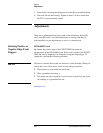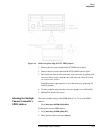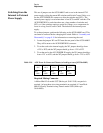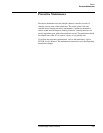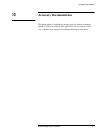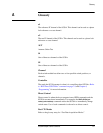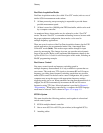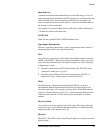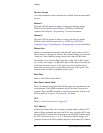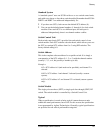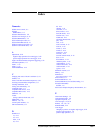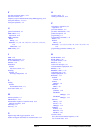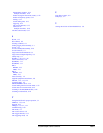
A-4 85330A Multiple Channel Controller
Glossary
Receiver System
All of the instruments in the system that act as the RF downconverter and IF
receiver.
Remote 1
The mode a 85330 operates in when it is being controlled by another
85330A in the Controller mode. Refer to “RUNTime: CONTroller”
command and Chapter 6, “Programming” for more information.
Remote 2
The mode a 85330 operates in when it is being controlled by another
85330A in the Controller mode. Refer to “RUNTime:CONTroller”
command on page 7-8 and Chapter 6, “Programming” for more information.
Return Loss
Reflection measurements determine how much RF energy bounces off of a
cable connector or the input of a device. This reflected energy is measured in
“return loss” units. Reflected energy travels back toward the RF source.
For example. If you send a 0 dBm signal into a cable with 14 dB of return
loss, a lower-level signal (−14 dBm) will reflect off the input of the cable and
travel back toward the source. A low return loss value is bad because it
shows that too much power is being reflected back out of the system. This
indicates a bad connection somewhere in the system.
Run-Time
Refer to “Run-Time Control Mode.”
Run-Time Control Mode
This is an automatic mode where the 85330A can be pre-programmed to run
a measurement. Using GPIB commands, the 85330A must set up prior to
run-time. Then, an GPIB command is issued to pass run-time control to the
85330A. Refer to Chapter 6, “Programming” for details.
SCU
Refer to “Switch Control Unit” on page A-5.
SCU Address
Each Switch Control Unit can be assigned a unique address called an SCU
address. When commands are sent to the SCUs, they only affect SCUs with
the specified SCU address. SCU addresses are set using DIP switches inside
the SCU, and can be set to 0, 1, 2, or 3. The factory default setting is 0. If
you daisy-chain several SCUs together, they may use the same SCU address.



